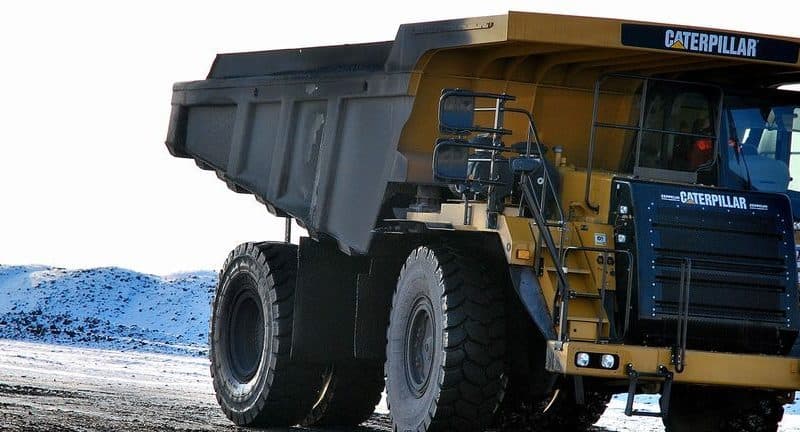Unfortunately for some shareholders, the Caterpillar (NYSE:CAT) share price has dived 34% in the last thirty days. Indeed the recent decline has arguably caused some bitterness for shareholders who have held through the 30% drop over twelve months.
All else being equal, a share price drop should make a stock more attractive to potential investors. In the long term, share prices tend to follow earnings per share, but in the short term prices bounce around in response to short term factors (which are not always obvious). The implication here is that long term investors have an opportunity when expectations of a company are too low. One way to gauge market expectations of a stock is to look at its Price to Earnings Ratio (PE Ratio). A high P/E implies that investors have high expectations of what a company can achieve compared to a company with a low P/E ratio.
How Does Caterpillar’s P/E Ratio Compare To Its Peers?
We can tell from its P/E ratio of 8.55 that sentiment around Caterpillar isn’t particularly high. We can see in the image below that the average P/E (16.0) for companies in the machinery industry is higher than Caterpillar’s P/E.
This suggests that market participants think Caterpillar will underperform other companies in its industry. Many investors like to buy stocks when the market is pessimistic about their prospects. You should delve deeper.
How Growth Rates Impact P/E Ratios
Generally speaking the rate of earnings growth has a profound impact on a company’s P/E multiple. Earnings growth means that in the future the ‘E’ will be higher. And in that case, the P/E ratio itself will drop rather quickly. And as that P/E ratio drops, the company will look cheap, unless its share price increases.
Caterpillar’s earnings per share grew by -4.4% in the last twelve months. And it has bolstered its earnings per share by 22% per year over the last five years.
Remember: P/E Ratios Don’t Consider The Balance Sheet
The ‘Price’ in P/E reflects the market capitalization of the company. In other words, it does not consider any debt or cash that the company may have on the balance sheet. Theoretically, a business can improve its earnings (and produce a lower P/E in the future) by investing in growth. That means taking on debt (or spending its cash).
Spending on growth might be good or bad a few years later, but the point is that the P/E ratio does not account for the option (or lack thereof).
So What Does Caterpillar’s Balance Sheet Tell Us?
Caterpillar’s net debt is 60% of its market cap. This is enough debt that you’d have to make some adjustments before using the P/E ratio to compare it to a company with net cash.
The Verdict On Caterpillar’s P/E Ratio
Caterpillar’s P/E is 8.6 which is below average (13.3) in the US market. The meaningful debt load is probably contributing to low expectations, even though it has improved earnings recently. Given Caterpillar’s P/E ratio has declined from 12.9 to 8.6 in the last month, we know for sure that the market is more worried about the business today, than it was back then. For those who prefer invest in growth, this stock apparently offers limited promise, but the deep value investors may find the pessimism around this stock enticing.
Investors have an opportunity when market expectations about a stock are wrong. If the reality for a company is not as bad as the P/E ratio indicates, then the share price should increase as the market realizes this.

